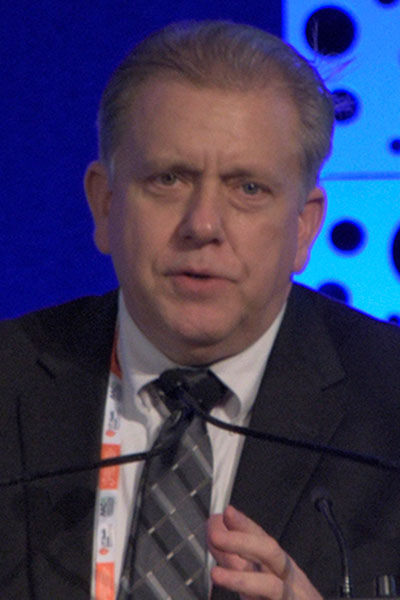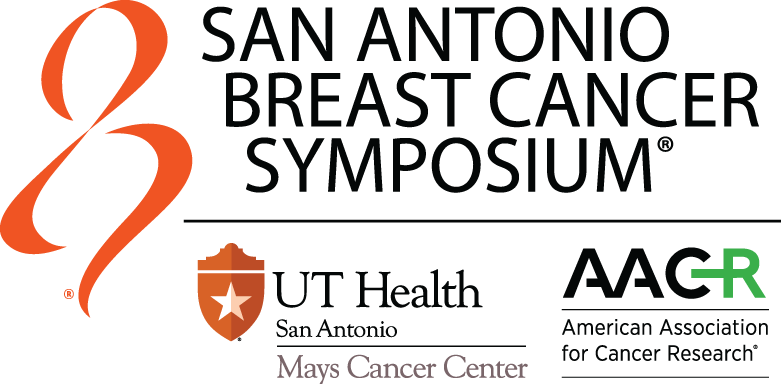An estimated 40% of all cancers are associated with modifiable risk factors such as excess body weight, unhealthy dietary patterns, and physical inactivity. During a special session Tuesday, December 10, at the 2024 San Antonio Breast Cancer Symposium®, a panel of experts discussed the mechanisms linking obesity to breast cancer risk. They also reviewed strategies for risk reduction that include caloric restriction, increased physical activity, advanced nutrient-sensing hormone therapeutics, and the combined effects of exercise and pharmacotherapy.
The session, Risk Reduction and Early Detection: Mechanisms of Obesity-Related Risk for Breast Cancer and Approaches to Risk Reduction, will be available on demand for registered 2024 SABCS® participants through March 31, 2025.

Catherine Duggan, PhD, Principal Staff Scientist at the Fred Hutchinson Cancer Center, discussed the role of genetic and epigenetic interactions in predicting the development of obesity, as well as the response to calorie restriction and physical activity. She also highlighted how the evolution of tools, such as epigenetic clock tests and DNA methylation pattern assays, may help predict an individual’s risk for breast cancer and other diseases.
“There is a reciprocal relationship between obesity and DNA methylation, with obesity causing altered DNA methylation and that, in turn, predisposes individuals to obesity,” Dr. Duggan said. “DNA methylation patterns hold promise as predictive markers for breast cancer risk and, for patients with obesity, tracking changes in DNA methylation patterns could offer a way to monitor shifts in breast cancer risk.”
Advances in artificial intelligence (AI) and machine learning along with an increased understanding of the impact of epigenetic changes have driven the development of epigenetic clocks tests, she said. These can potentially allow clinicians to measure and assess an individual’s risk for various conditions, including breast cancer.
“Epigenetic clocks are developed using data from high-throughput DNA methylation arrays to estimate biological age, as opposed to chronological age. They rely on machine-learning tools that incorporate data from both the methylation pattern and phenotypic data,” Dr. Duggan said. “Researchers have found that comparing chronological age — the actual age of an individual — with the epigenetic clock age can provide important insights into aging and disease.”
Epigenetic age acceleration occurs when biological age outpaces chronological age and is associated with increased breast cancer risk, she noted.
“Several case control studies using different clocks have shown increased age acceleration in cancer cases compared to controls, suggesting that it might be useful as a way to stratify breast cancer risk,” Dr. Duggan said. “Emerging new generations of epigenetic clocks with increased predictive accuracy will provide new insights into biological aging and cancer risk, and potentially lead to the development of breast cancer-specific epigenetic clocks.”

Neil M. Iyengar, MD, Associate Attending Physician at Memorial Sloan Kettering Cancer Center, continued with a discussion on how fat loss and metabolic improvements affect cancer risk, the pathways to obesity reversal, and the role of incretin mimetics, such as nutrient-stimulated hormone (NUSH)-based therapeutics.
“We’ve seen that weight loss, particularly 10% or greater, appears to attenuate the cancer-promoting effects of obesity, and we have promising observational data which indicate that the incretin mimetics, both the single and dual receptor agonists, may reduce the risk of most obesity-associated cancers,” Dr. Iyengar said. “It appears, based on the available evidence, that the effects of incretin mimetics are likely mediated through energy restriction, but there are ongoing and emerging studies that will help to further address whether or not these agents have direct anti-cancer efficacy.”
While studies with longer follow-up time are needed, he noted that the impact of incretin mimetics are likely to be different in pre- and post-cancer diagnosis settings. This distinction has significant implications for the design of prospective clinical trials.
“Some of the key questions that I think are really important for future studies to address include determining the optimal window to intervene for a risk-reduction effect and the optimal duration of therapy with the incretin mimetics to effectively reduce cancer risk,” Dr. Iyengar said. “That gives rise to the question of whether we can combine pharmacotherapy with lifestyle interventions, perhaps in an induction and maintenance approach, for inducing weight loss and maintaining that weight loss.”

In the final presentation, John M. Jakicic, PhD, Professor in the Department of Internal Medicine in the Division of Physical Activity and Weight Management at the University of Kansas Medical Center, discussed how exercise and physical activity acts to help mitigate the adverse metabolic effects of obesity. He also emphasized that weight loss must be considered as part of a holistic approach to improve health and reduce risk.
“Weight is just one component of obesity, and when we think about obesity as a chronic condition, we have to think about all the downstream factors and go beyond simply treating weight to treating obesity,” Dr. Jakicic said. “If we’re treating obesity, activity is going to affect some of those downstream factors differently or in an enhanced way, compared to just thinking about it from a weight perspective, and I think that’s critical.”
For clinicians, it’s essential to think about physical activity and exercise within the context of an individual patient’s overall holistic health and well-being, he said.
“Exercise is critically important, but we need to get away from it being a method-centered approach and think about it from a patient-centered perspective, just like you would in any other treatment, and that’s going to vary from person to person,” Dr. Jakicic said. “If we do that, our opportunities are huge because we know that most patients with obesity are not active enough, and there are many benefits from a health perspective that occur whether or not we literally move the scale when it comes to weight loss.”
Access the 2024 SABCS® virtual platform
Watch any sessions you’ve missed and stay connected with fellow attendees in the online platform of the 2024 San Antonio Breast Cancer Symposium®. Recordings of sessions will be available on demand for registered 2024 SABCS® participants until March 31, 2025.

